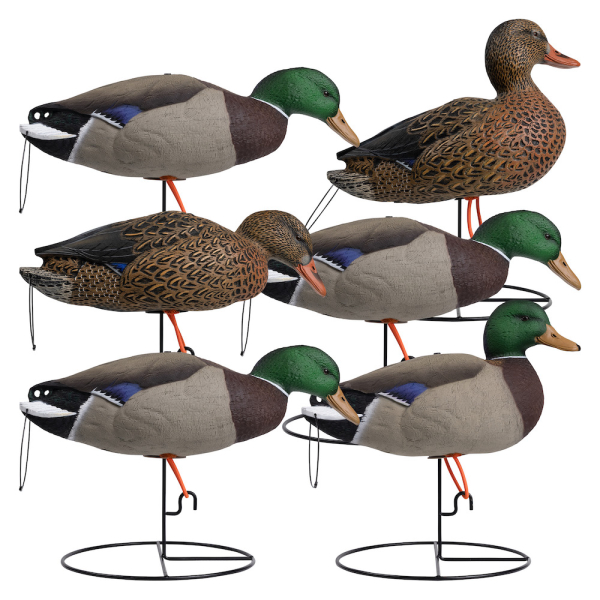Deer Decoy Tactics

Position a buck decoy facing you so the real thing will be looking away when it approaches. (Bob Humphrey photo)
|
By Bob Humphrey
Want to play a trick or treat with the whitetails this Halloween? Use decoys to trick them into thinking there’s a treat.
Buck or Doe? Doe decoys might work most any time. Early in the season, the sight will put other deer at ease and may draw them nearer. During the rut a doe represents a potential mate, and a buck might approach, particularly if they can pick up olfactory signals like estrus scent.
However, a buck is more likely to approach another buck, which represents a potential rival. Use a buck and a doe decoy and they’ll come, often more quickly, and with fire in their eyes.
How Big? Adjust the “level of competition” to match your objective. Your decoy should be slightly smaller than your intended victim. Big bodied decoys work great on big bucks, but may intimidate smaller or younger ones. Rack size is also particularly important as evidence suggests that a buck’s antlers play an important role in demonstrating his age and vigor to other deer.
When? A solo buck decoy has a wider area of opportunity because bucks fight well before the rut. The closer to rut you get the more intense it gets, and the more effective your decoy is. The competitive card is best played during the peak of rut.
How? How you position your decoy(s) depends a lot on which sex you use. A buck will more often approach another buck head on, and a doe from the rear. Position your decoy accordingly to offer the best shot opportunity. Also make sure they’re well in range of your weapon of choice, and upwind of your position.





